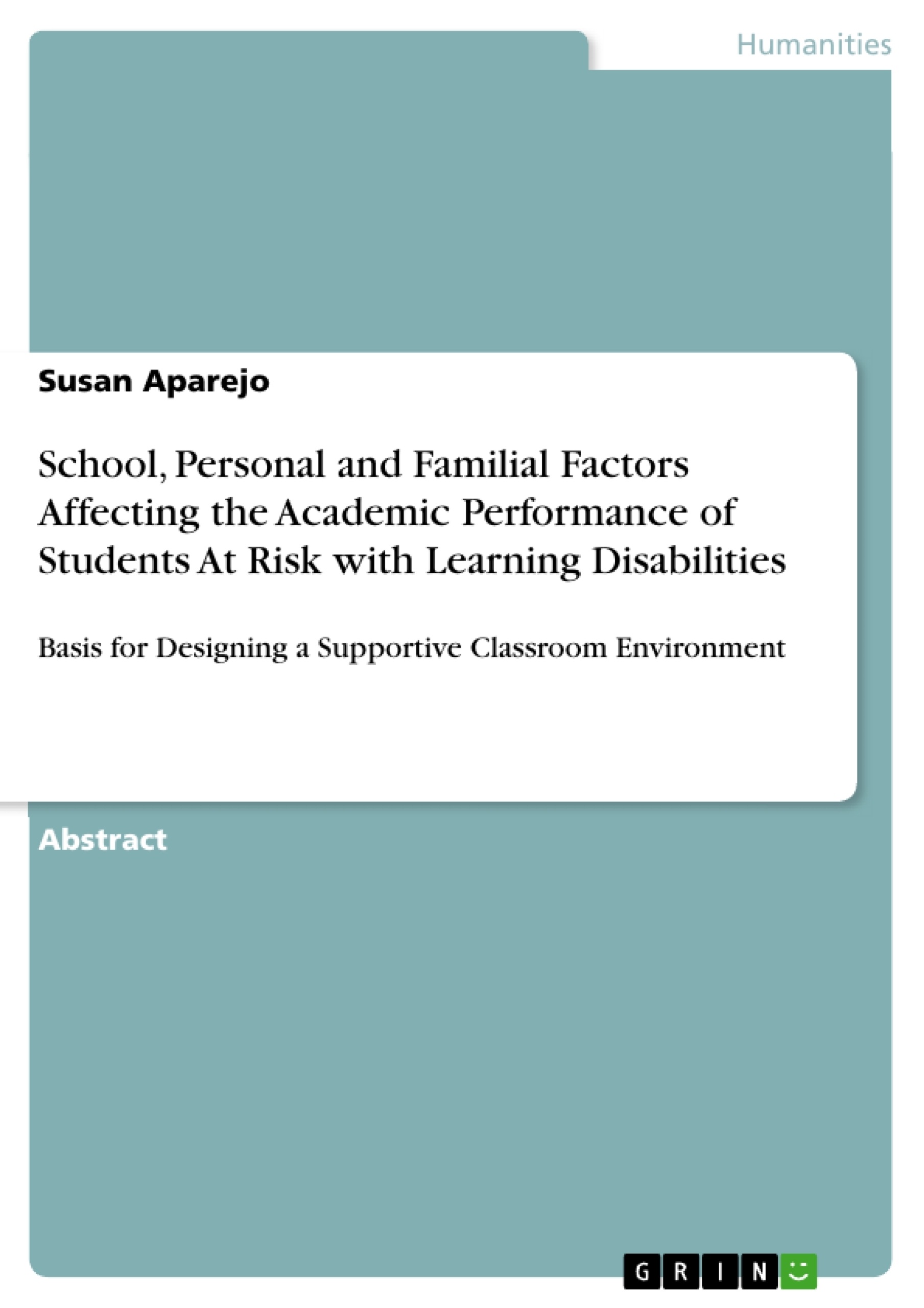The main purpose of this study was to determine the specific learning disabilities, level of self efficacy, self esteem multiple intelligences, parent and teacher’s involvement of students at risks with learning disabilities and their influence to the academic performance of high school students at risk with learning disabilities in order to design a supportive classroom environment for these children.
Table of Contents
- Introduction
- Theoretical Framework
- Research Methodology
- Research Locale
- Respondents of the Study
- Research Instruments
- Instruments Reliability
- Instruments' Validity
- Statistical Treatment
- Conclusion
- Recommendations
- Bibliography
Objectives and Key Themes
This dissertation aims to investigate the factors influencing the academic performance of students at risk with learning disabilities, focusing on personal, familial, and school-related aspects. The study seeks to provide valuable insights for designing a supportive classroom environment that caters to their specific needs.
- The impact of self-efficacy and self-esteem on academic performance in students with learning disabilities
- The role of parental involvement and teacher support in promoting the academic success of at-risk students
- The influence of multiple intelligences and accommodations in creating an inclusive and effective learning environment
- The challenges and opportunities presented by the identification and support of students with learning disabilities within a school setting
- The importance of understanding the unique learning styles and strengths of students with learning disabilities
Chapter Summaries
The introduction of the dissertation provides a comprehensive overview of the study's objectives and research questions. It delves into the concept of special education and the challenges faced by students with learning disabilities, particularly those who are at risk of academic failure. The theoretical framework chapter explores relevant theories and research findings related to self-efficacy, self-esteem, multiple intelligences, and other factors influencing academic performance. The research methodology chapter outlines the study's design, including the research locale, respondents, instruments, and data analysis techniques. The conclusion chapter summarizes the study's findings and provides recommendations for enhancing the academic success of students at risk with learning disabilities.
Keywords
This dissertation focuses on the key concepts of self-efficacy, self-esteem, multiple intelligences, accommodations, academic performance, interventions, parents' involvement, and teacher support. The study explores the relationship between these concepts and the academic performance of students at risk with learning disabilities, providing valuable insights for educators and policymakers.
- Quote paper
- Susan Aparejo (Author), 2015, School, Personal and Familial Factors Affecting the Academic Performance of Students At Risk with Learning Disabilities, Munich, GRIN Verlag, https://www.grin.com/document/306306



